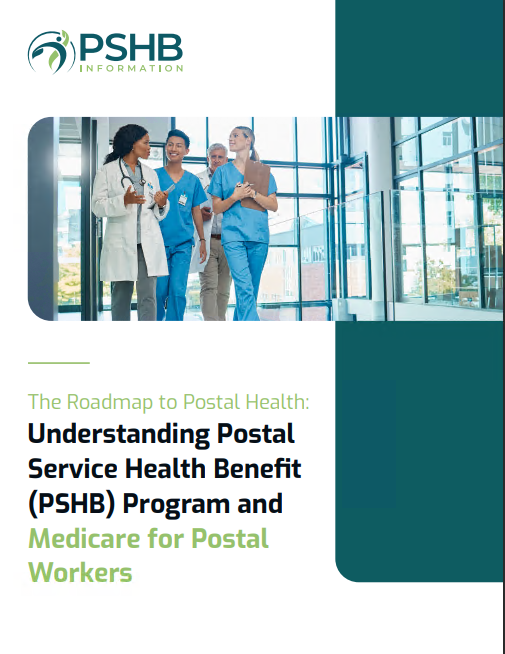Key Takeaways:
-
Medigap helps cover out-of-pocket costs that Original Medicare doesn’t pay for, reducing unexpected expenses.
-
Understanding what Medigap premiums include can help you make informed decisions about your healthcare coverage.
What Does a Medigap Premium Really Cover?
Medigap, also called Medicare Supplement Insurance, is designed to help fill the gaps in Original Medicare. If you’re a Postal Service retiree or planning for retirement, you’ve probably come across the term and wondered what it truly includes. Let’s break it down so you can feel confident about your healthcare choices.
At its core, your Medigap premium covers the cost of benefits designed to supplement what Original Medicare doesn’t pay. These include costs like copayments, coinsurance, and deductibles, giving you more predictable healthcare expenses each month.
Filling in the Medicare Gaps
Coinsurance and Copayments
Original Medicare covers most healthcare expenses, but you’ll often be responsible for coinsurance and copayments. For example:
-
Part A Coinsurance: This applies to inpatient hospital stays. After meeting the deductible, you’ll pay daily coinsurance amounts for extended stays.
-
Part B Coinsurance: For most outpatient services, you’re responsible for 20% of the costs, with no maximum out-of-pocket limit.
Medigap steps in to pay for these costs, easing your financial burden. This can be especially helpful if you’re managing chronic conditions or anticipate frequent medical care.
Deductibles
Medicare Part A and Part B have separate deductibles. For instance, in 2025, the Part A deductible for hospital stays is $1,676 per benefit period. Medigap plans often cover these deductibles entirely or partially, depending on the plan you choose.
Excess Charges
Some providers charge more than Medicare’s approved amount for services. These are called excess charges, and Medigap can help cover them. If you frequently see specialists who don’t accept Medicare’s standard rates, this feature is a valuable benefit.
How Medigap Protects Your Finances
Predictable Monthly Costs
With Medigap, your monthly premium is a known cost that helps shield you from unpredictable medical bills. Instead of worrying about each visit’s out-of-pocket costs, you’ll know what to expect, making budgeting for healthcare much easier.
Coverage for Emergency Healthcare Abroad
Some Medigap plans provide coverage for medical emergencies when traveling outside the United States. For Postal Service retirees who enjoy traveling during retirement, this can be a crucial benefit.
Avoiding Medicare’s Coverage Gaps
Original Medicare doesn’t include coverage for services like dental, vision, or hearing. While Medigap doesn’t typically cover these either, its ability to handle the big-ticket gaps in Medicare’s coverage can free up your budget to explore standalone plans for additional needs.
Choosing the Right Medigap Plan
Assess Your Needs
Start by evaluating your health needs and financial situation. Think about how often you visit doctors, whether you anticipate hospital stays, and if you see providers who don’t accept Medicare’s rates.
Standardized Benefits
Medigap plans are standardized in most states, meaning the benefits of a Plan G or Plan N are the same no matter where you purchase it. This makes comparing plans easier, allowing you to focus on the premium and any additional considerations.
Enrollment Timing Matters
Your Medigap Open Enrollment Period lasts six months, starting the first month you’re 65 or older and enrolled in Medicare Part B. During this time, you have guaranteed issue rights, meaning insurers can’t deny you coverage or charge higher premiums based on your health. Waiting until after this period could limit your options or increase costs.
What to Watch Out For
Premium Increases
While Medigap premiums offer stability, they can rise over time. This can happen due to factors like your age, inflation, or changes in healthcare costs. Understanding the pricing structure—whether it’s community-rated, issue-age-rated, or attained-age-rated—can help you anticipate future changes.
Does Medigap Work With Other Insurance?
If you have other coverage, such as through a spouse’s employer or federal retiree benefits, it’s important to understand how Medigap will coordinate. For instance, Federal Employees Health Benefits (FEHB) may already cover some costs, making Medigap unnecessary for certain retirees.
What Medigap Doesn’t Cover
Medigap doesn’t pay for everything. Long-term care, vision, dental, hearing aids, and private nursing are excluded. For these needs, you’ll need separate plans or savings.
Key Benefits for Postal Service Retirees
As a USPS retiree, you might already have experience navigating health benefits. Medigap can complement your Medicare and existing health coverage, giving you peace of mind. It’s particularly valuable if you’re transitioning from an active employee to retiree status and need a stable way to manage healthcare expenses.
Coordination With Medicare Part B
Many Medigap plans require you to be enrolled in Part B, which covers outpatient services. Together, they create comprehensive coverage that minimizes gaps and reduces out-of-pocket costs for routine and unexpected care.
Travel Benefits
Retirement is a great time to travel, and Medigap’s emergency coverage outside the U.S. ensures you’re protected wherever you go. It’s worth checking if your chosen plan includes this benefit if international trips are in your future.
Why Medigap Is Worth Considering
Medigap can significantly reduce the financial stress of unexpected medical bills. By understanding what your premiums cover, you’ll gain clarity and confidence in your healthcare choices. It’s a proactive way to manage costs and ensure you’re not caught off guard by Medicare’s limitations.
With careful planning, you can choose a Medigap plan that suits your needs and complements your existing benefits. This ensures a smoother transition into retirement and greater peace of mind as you navigate your healthcare journey.
Planning Your Healthcare With Confidence
Taking control of your healthcare decisions starts with understanding your options. Medigap fills critical gaps in Medicare, offering financial security and predictable costs. As a Postal Service retiree, exploring this option could simplify your retirement planning and help you focus on enjoying this new chapter of your life.









